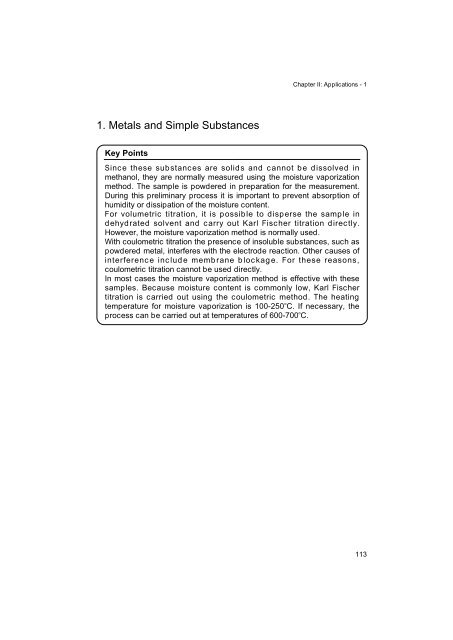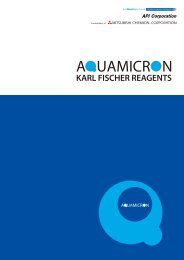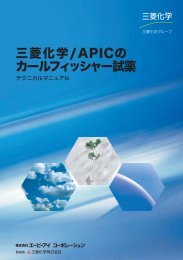Development of Karl Fischer Reagents
Development of Karl Fischer Reagents
Development of Karl Fischer Reagents
You also want an ePaper? Increase the reach of your titles
YUMPU automatically turns print PDFs into web optimized ePapers that Google loves.
1. Metals and Simple Substances<br />
Key Points<br />
Chapter II: Applications - 1<br />
Since these substances are solids and cannot be dissolved in<br />
methanol, they are normally measured using the moisture vaporization<br />
method. The sample is powdered in preparation for the measurement.<br />
During this preliminary process it is important to prevent absorption <strong>of</strong><br />
humidity or dissipation <strong>of</strong> the moisture content.<br />
For volumetric titration, it is possible to disperse the sample in<br />
dehydrated solvent and carry out <strong>Karl</strong> <strong>Fischer</strong> titration directly.<br />
However, the moisture vaporization method is normally used.<br />
With coulometric titration the presence <strong>of</strong> insoluble substances, such as<br />
powdered metal, interferes with the electrode reaction. Other causes <strong>of</strong><br />
interference include membrane blockage. For these reasons,<br />
coulometric titration cannot be used directly.<br />
In most cases the moisture vaporization method is effective with these<br />
samples. Because moisture content is commonly low, <strong>Karl</strong> <strong>Fischer</strong><br />
titration is carried out using the coulometric method. The heating<br />
temperature for moisture vaporization is 100-250 � C. If necessary, the<br />
process can be carried out at temperatures <strong>of</strong> 600-700 � C.<br />
113




